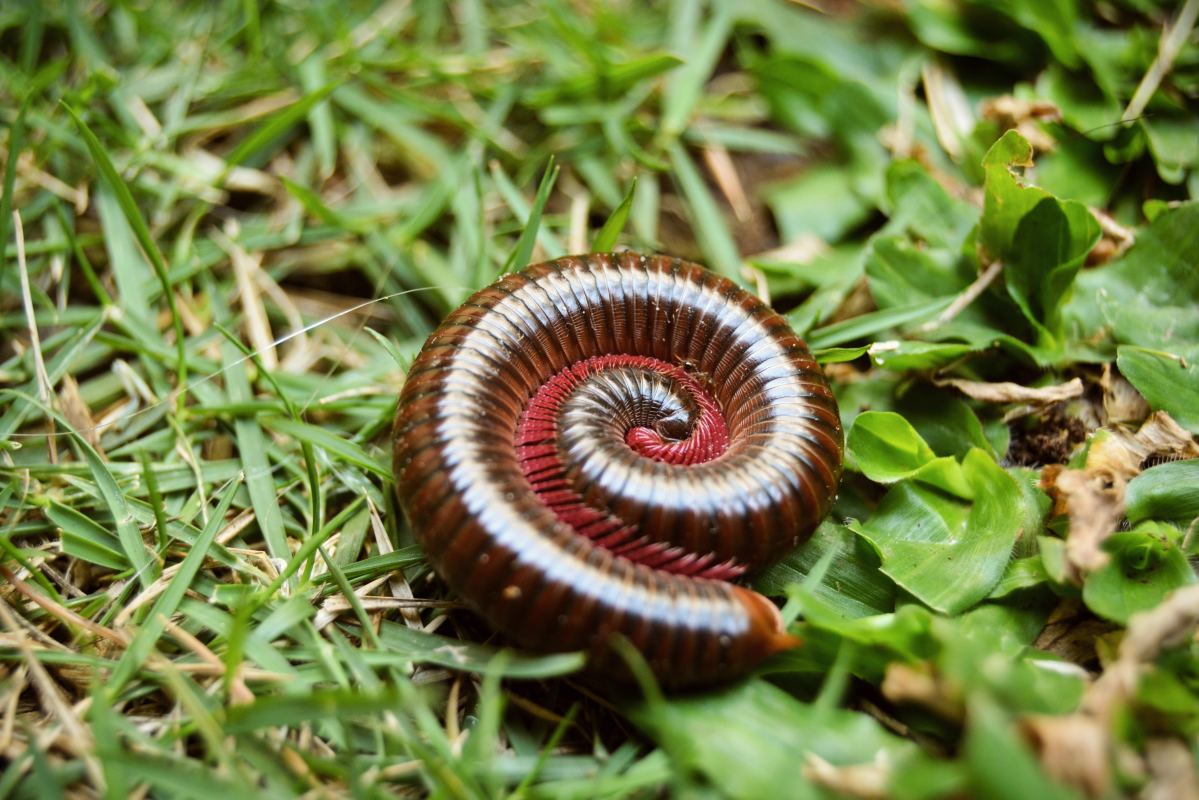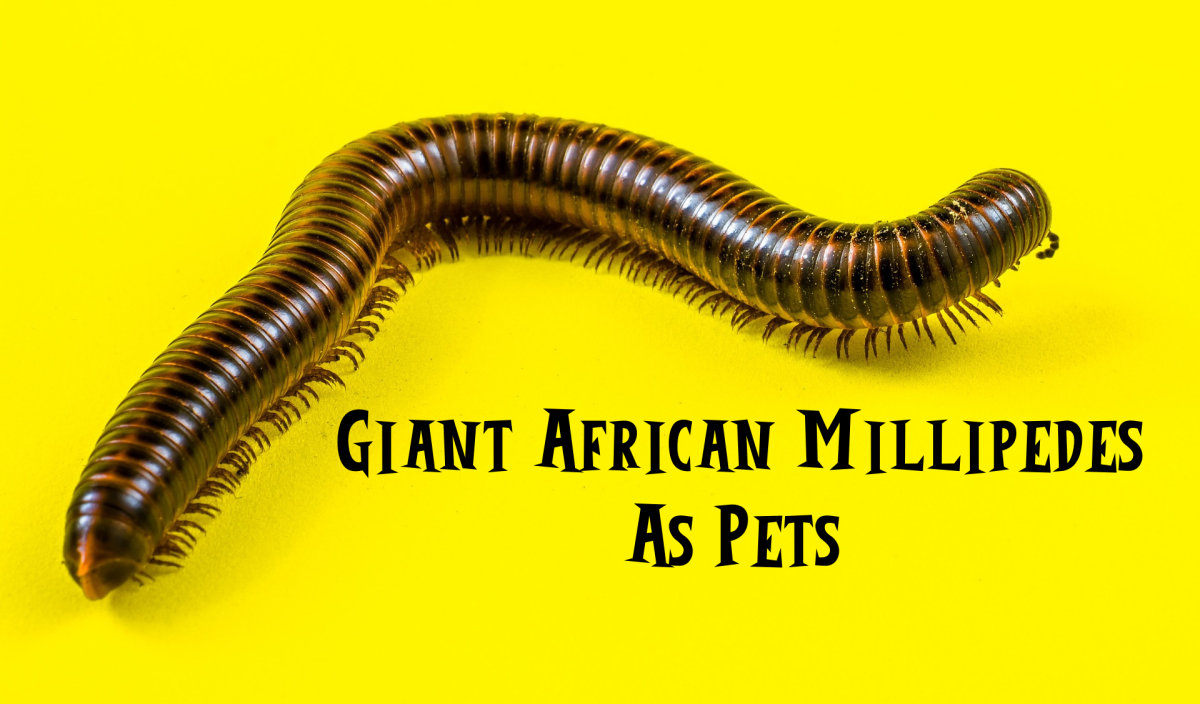
Rashid/Unsplash
Pet Millipedes
Giant African millipedes are large arthropods, and typically range from 4-12 inches in length. They are dark brown or black, and they have two eyes and two antennae. They can have 40 or more body segments, and each segment has two sets of legs. That means they can have up to 400 legs!

They are very large for millipedes and quite loose, and due to the shape of their jaws, they cannot deliver a damaging bite. Although they cannot cause a painful bite to a person, they have several defense mechanisms. The first is that they can roll into a tight ball, and the second is that they can secrete a liquid made of hydrogen cyanide that irritates the skin. Because they emit venom this may be a pet you don’t handle very often, but that doesn’t mean they aren’t worth keeping! It is truly an amazing experience to witness the behaviors of such a strange creature.

Picture of
What Kind of Enclosure Should I Keep Them In?
Giant African millipedes do well in a glass enclosure. The glass allows heat to escape so their enclosure doesn’t get too hot. A 10 or 15-gallon glass tank with a lid is a good choice for pets, but if you want to use a larger aquarium it’s definitely ok to go bigger!
You want to choose an enclosure that is at least three times the length of the millipede, and at least twice the width. Make sure your tank lid is escape-proof, as they are known to push lids into their enclosure. You can do this by weighing the lid down, tapping it down, or making sure the lid is very tight.

Picture of
What Do They Need in Their Enclosure?
Their enclosures are actually quite simple, there are only a few things they need to have.
Substrate
Millipedes feed on their substrate, so this part is pretty important! It should be a mixture of soil, wood, and leaves. A mixture of soil and peat moss is a good base, and it should be about 3 to 4 inches deep because they like to dig. You can cover the top with leaf litter and pieces of wood, just remember to freeze anything you bring in for 24 hours to prevent anything harmful from entering your enclosure.
Heat and Light
There is no need for an additional light source for your giant African millipede as they are nocturnal. You also don’t need a heat lamp because their ideal temperature is from 70-80 degrees. If your house is cooler than 70-75 degrees, an under-the-tank heater with a thermostat will work well, just be sure to watch the humidity. Sometimes placing a heater on the side of the tank can prevent the substrate from becoming too dry.
humidity
Giant African Millipedes are native to the rainforests of subtropical west Africa, so they need about 60% humidity. You can achieve this by misting the substrate. You can buy a humidity gauge or try to keep it so that the soil is wet for a week, but there is no condensation on the sides of the enclosure. In humidity, there must be enough ventilation in the terrarium to ensure that the substrate does not get moldy.

Picture of
Can I Keep More than One Giant Millipede in an Enclosure?
Giant African Millipedes are not aggressive towards each other, so it is good to keep several of them in the same enclosure. It is important to make sure that they still have enough space and that they do not have to compete for food. Another thing to remember is that millipedes reproduce quickly, so if you don’t want babies you should only keep millipedes of the same sex.
Male millipedes will have gonopods (male reproductive organs) on the 3rd or 7th segment. The gonopods replace the legs, so they should be easy to see. An easy way to look for gonopods is to put the millipede in a clear cup or place them on a clear surface, and then look from the bottom.

Picture of
What do they eat?
They will eat the plant flesh in their substrate, but they also eat fruits and vegetables. They can eat most fruits and vegetables—bananas, cucumbers, leaf lettuce, melons, sweet potatoes, and tomatoes are all good choices. Just make sure not to rinse their food in chlorinated tap water. You only need to feed them once a day. Just leave their food in a shallow dish in the morning and pick up any leftovers at night.
They will get most of their water from the moisture in their substrate, but you can still give them a very shallow dish of dechlorinated water. Be sure to put a large rock in the water container so they don’t drown.
They need calcium. This can be provided by dusting their food with a calcium supplement, or you can simply leave a cuttlebone in their enclosure.
Sources
- African Giant Millipedes: Species Profile
- Giant African Train Millipede Care
This article is accurate and true to the best of the author’s knowledge. The content is for informational or entertainment purposes only and is not a substitute for personal advice or professional advice on business, financial, legal, or technical matters.
© 2021 Jess H


